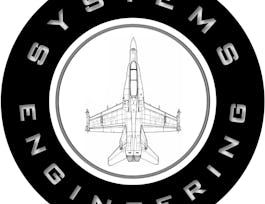Discover the core principles of process safety and risk analysis in chemical engineering through our dynamic course. Gain expertise in modeling liquid and gas leaks, accurately assessing potential material releases, and calculating downwind exposures to toxic chemicals using state-of-the-art dispersion models. This course equips chemical engineers with essential skills to evaluate and mitigate hazardous concentrations effectively, ensuring industrial process safety. From theoretical foundations to practical applications, participants will learn to propose prevention measures and advance their careers in chemical engineering. Join us to elevate your proficiency in process safety and make a meaningful impact in the field.



Predictive Models for Toxic Chemical Releases
This course is part of Chemical Hazards and Process Safety Specialization

Instructor: Jason White
Sponsored by BrightStar Care
(36 reviews)
Skills you'll gain
- Hazard Communication (HazCom)
- Environment Health And Safety
- Engineering Analysis
- Simulation and Simulation Software
- Safety Training
- Health And Safety Standards
- Structural Analysis
- Mitigation
- Accident Prevention
- Vulnerability Management
- Cyber Security Assessment
- Engineering Calculations
- Vulnerability Assessments
- Engineering Software
- Finite Element Methods
- Safety Assurance
- Occupational Safety And Health
- Process Engineering
Details to know

Add to your LinkedIn profile
4 assignments
See how employees at top companies are mastering in-demand skills

Build your subject-matter expertise
- Learn new concepts from industry experts
- Gain a foundational understanding of a subject or tool
- Develop job-relevant skills with hands-on projects
- Earn a shareable career certificate


Earn a career certificate
Add this credential to your LinkedIn profile, resume, or CV
Share it on social media and in your performance review

There are 4 modules in this course
After this module, you will be able to describe the terms that make up the mechanical energy balance. You will be able to apply the mechanical energy balance to derive a simple source model for a liquid leak through a hole and be able to extend the simple source model for liquid leak through a hold to account for a situation where the change in liquid level is significant. You will also be able to incorporate frictional losses in piping systems into liquid source model derivation.
What's included
9 videos4 readings1 assignment1 discussion prompt
After this module, you will be able to apply the mechanical energy balance to derive a simple source model for a gas leak through a hole. You will also be able to use models of adiabatic and isothermal gas or vapor flows through pipes and understand challenges with deriving models for such flows. You will be able to estimate volatile vapor component concentrations in enclosed spaces and assess the potential for hazardous concentrations and be able to describe source model selection for scenarios involving flashing liquids.
What's included
8 videos4 readings1 assignment1 discussion prompt
After this module, you will be able to describe air dispersion and the parameters required to describe it. You will be able to formulate neutrally buoyant plume dispersion models. You'll also be able to perform calculations using plume models and use results to identify potential hazardous situations and propose prevention/mitigation measures if necessary.
What's included
6 videos2 readings1 assignment
After this module, you will be able to formulate neutrally buoyant puff models and be able to describe isopleths and how they are used in evaluating puff models. You will be able to perform calculations using puff models and use results to identify potential hazardous situations and propose prevention/mitigation measures if necessary.
What's included
7 videos4 readings1 assignment1 discussion prompt
Instructor

Offered by
Why people choose Coursera for their career




Learner reviews
36 reviews
- 5 stars
50%
- 4 stars
41.66%
- 3 stars
8.33%
- 2 stars
0%
- 1 star
0%
Showing 3 of 36
Reviewed on Oct 4, 2024
The course is useful in day-to-day activities and process safety concern.
Reviewed on Jan 20, 2025
Very interesting, found the math quite hard but the theory made sense and was very worthwhile.
Recommended if you're interested in Physical Science and Engineering

University of Colorado Boulder

LearnKartS

L&T EduTech

Open new doors with Coursera Plus
Unlimited access to 10,000+ world-class courses, hands-on projects, and job-ready certificate programs - all included in your subscription
Advance your career with an online degree
Earn a degree from world-class universities - 100% online
Join over 3,400 global companies that choose Coursera for Business
Upskill your employees to excel in the digital economy



